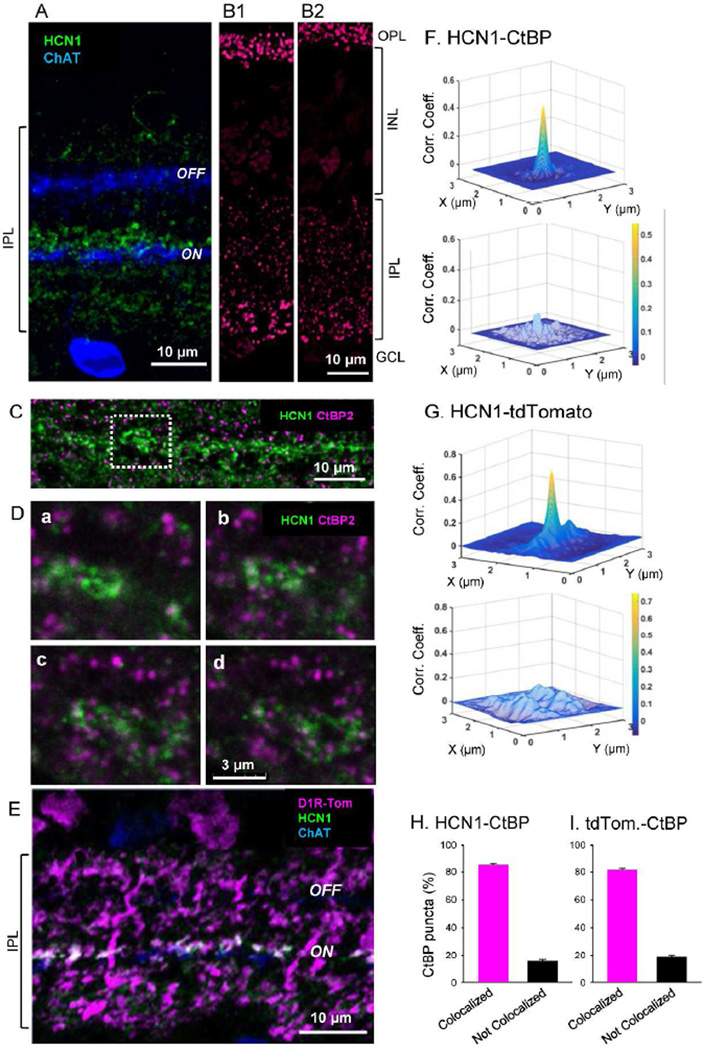Figure 5.
Evidence that HCN1 antibody labels type 5 cells and colocalized with tdTomato. (A) HCN1 signaling was observed in the IPL near the outer edge of the ON ChAT band. (B) Verification of CtBP antibody. CtBP2/Ribeye antibodies labeled ribbon synapses in mouse retinal sections. Puncta of ribbon synapses in photoreceptors are labeled in the OPL, while ribbon synapses in bipolar cell terminals are labeled throughout the IPL. Both anti-CtBP2 from Santa Cruz (B1) and anti-Ribeye from Synaptic Systems (B2; Table 1) showed similar pattern that are also consistent with the immunostaining reported in mouse retina with different Ribeye antibody (Figure 1; (tom Dieck et al., 2005). (C) HCN1 signaling overlaps with a ribbon synapse marker, CtBP, showing labeled puncta. (D) High power view showing HCN1 staining and CtBP puncta from the dashed box illustrated in B. All panels are single digital section images (0.3 µm thick). From a through d, images were taken from one side to another side of the HCN1 strong staining every 1 µm. Many CtBP puncta colocalized with HCN1, indicating that HCN1 colocalized with bipolar cell terminals. (E) Strong HCN1 staining also colocalized with tdTomato staining immediately next to the ON ChAT band. (F) 2D cross-correlation coefficient analysis of CtBP puncta and HCN1 signaling. The majority of CtBP2 puncta colocalized with HCN1 staining (n=25 puncta with HCN1 colocalization; upper). A 90° rotation of the HCN1 image reduced the correlation coefficient (lower panel) indicating that HCN1/CtBP2 colocalization was not random. (G) 2D cross-correlation coefficient analysis of tdTomato and HCN1 signaling. Correlation was detected (n=20 images; upper panel), whereas no correlation was observed when one channel was rotated 90° (lower panel). (H) CtBP puncta were expressed as the proportion of puncta colocalized with HCN1 or not colocalized with HCN1 (1217 puncta were analyzed from 12 images, n=3 animals). (I) CtBP puncta were expressed as the proportion of puncta colocalized with tdTomato or not colocalized with tdTomato. (955 puncta were analyzed from 9 images, n=3 animals).

